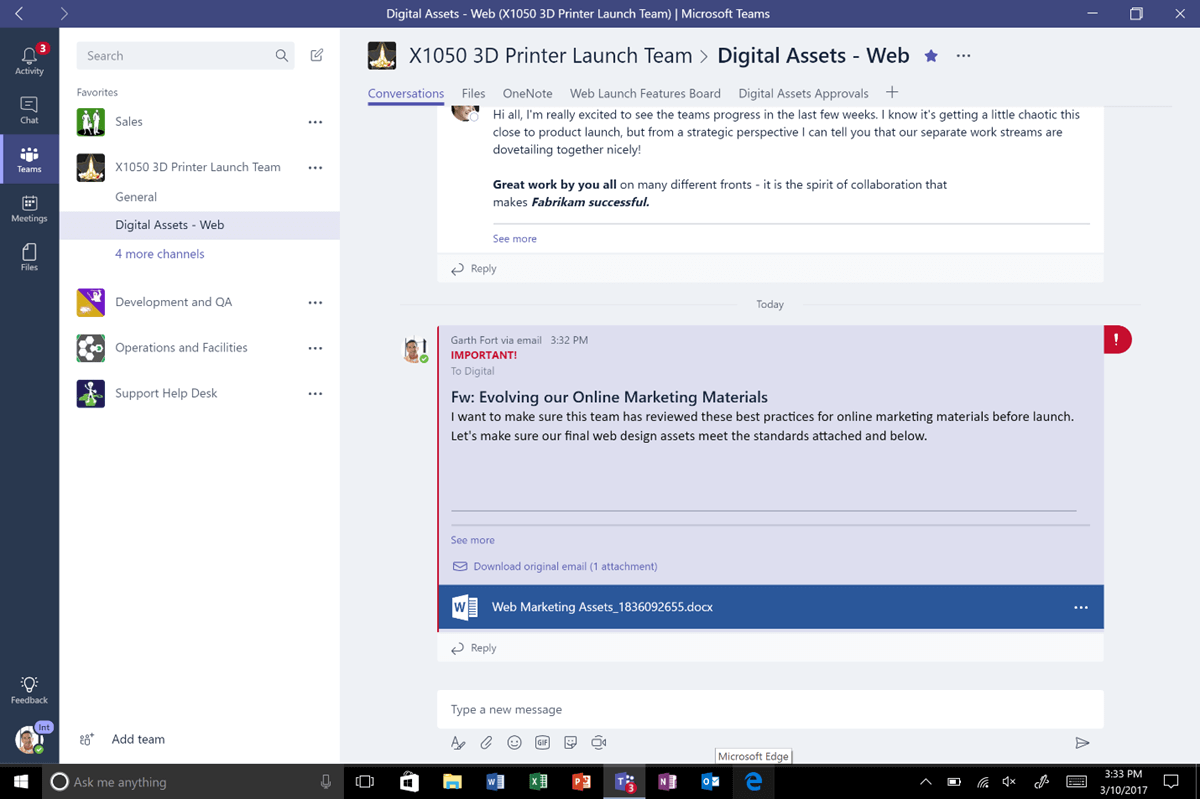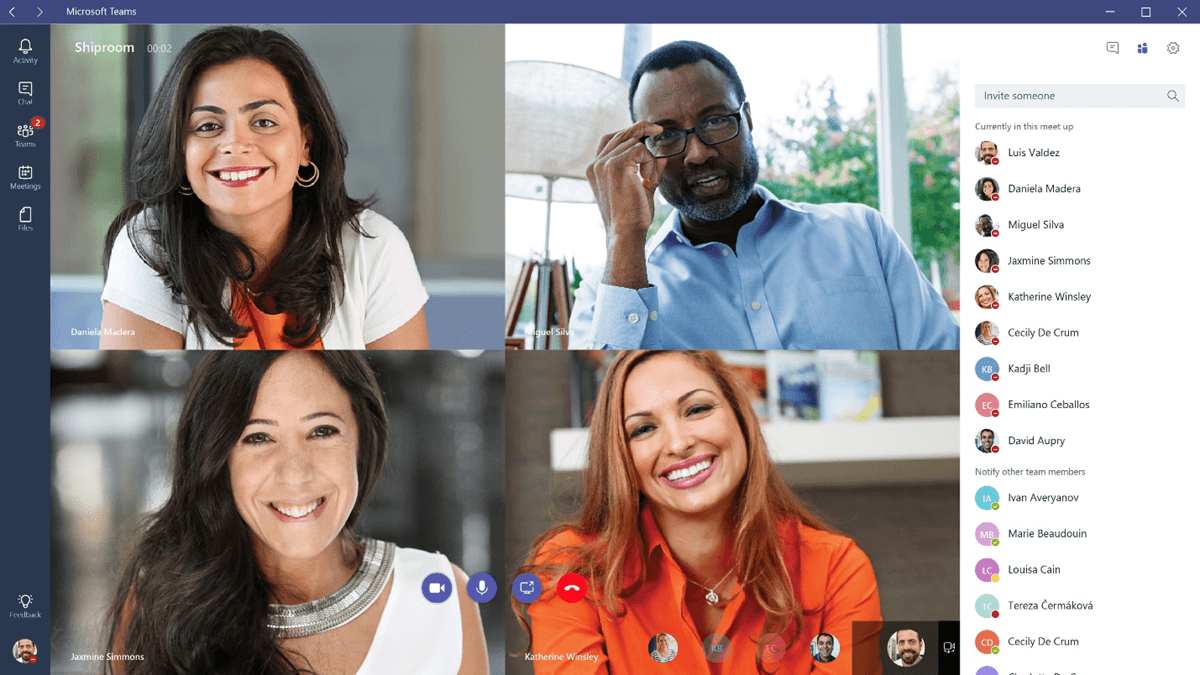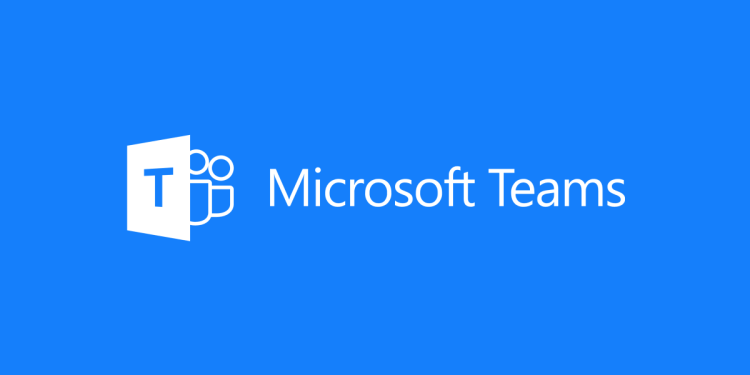Microsoft today announced Microsoft Teams — with Android, iOS, Mac, Windows, and web apps — has hit general availability in 181 countries and 19 languages. The company’s answer to Slack is part of Office 365, meaning Microsoft Teams is for businesses only — there are no plans for a free or consumer version.
Microsoft Teams is a web-based chat service aimed at businesses — and schools, though they’re not getting access today — that have multiple teams working on various projects at once. It features channels/groups, private messages, Skype video and audio calls, Office 365 integration (Word, Excel, and PowerPoint files), OneDrive support, Power BI and Planner integrations, as well as emoji, Giphy images, memes, and so on.
Microsoft launched the service in preview back in November. The company was aiming for general availability in the first quarter of 2017, meaning it succeeded with a couple of weeks to spare.

June 5th: The AI Audit in NYC
Join us next week in NYC to engage with top executive leaders, delving into strategies for auditing AI models to ensure fairness, optimal performance, and ethical compliance across diverse organizations. Secure your attendance for this exclusive invite-only event.
To turn the feature on or off, IT admins can simply open the Office 365 admin center, click on Settings, Services & Add Ins, and then choose Microsoft Teams. Also in there, they can choose how users’ profiles are configured, turn off video and screen sharing in calls and meetings, control whether to allow various kinds of content (including animated images, memes, and stickers), turn off support for tabs from Microsoft partners or side-loaded applications, and choose whether to use bots.
Since announcing the preview, more than 50,000 organizations started using Microsoft Teams, and Microsoft added more than 100 new features. Here are the most significant ones, per the company:
- Enhanced the meeting experience with the ability to schedule voice and video meetings with specific participants
- 1:1 calling on mobile, including video calling on Android
- Ability to email a channel
- Support for public teams, which anyone in the organization can discover and join
- Information Protection for channels, chats and files in Microsoft Teams, including: Archive, eDiscovery, Legal Hold, Compliance Content Search, Auditing, Reporting
- Mobile management with Microsoft Intune
- New accessibility features including support for screen readers, high contrast, and keyboard-only navigation
To see a longer list of what’s new, start a chat with T-Bot and select the Release Notes tab at the top. The list above points to obvious holes that have yet to be filled. For example, audio and video calling is “coming soon” to iOS and Windows Phone. But Microsoft is iterating quickly with Teams; already it is promising guest access capabilities, deeper integration with Outlook, and a richer developer platform in June.

For those interested in security and compliance certifications, Microsoft Teams is compliant with the following standards: ISO 27001, ISO 27018, SSAE16 SOC 1 and SOC 2, HIPAA, and EU Model Clauses (EUMC). Microsoft Teams also enforces team-wide and organization-wide two-factor authentication, single sign-on through Active Directory, and encryption of data in transit and at rest. Stored files are backed by SharePoint encryption and notes are backed by OneNote encryption.
Along with the news that Google is joining the fray, today’s launch is a big problem for Slack. Office 365 has 85 million active users, and they’re suddenly getting the option to use Microsoft Teams. By comparison, Slack has 5 million daily users and 1.5 million paying users.
While Microsoft will undoubtedly chip away at Slack’s current and potential paying users, the real race will be happening with the integrations available for both services. Microsoft promises that “more than 150 integrations are available or coming soon.” That includes tabs (click the “+” icon in any channel, bots (click the Search box and then “discover bots”), and connectors (click the “…” icon next to any channel name and selecting “Connectors>”). Slack is way ahead, but Microsoft is pulling out everything to catch up.

